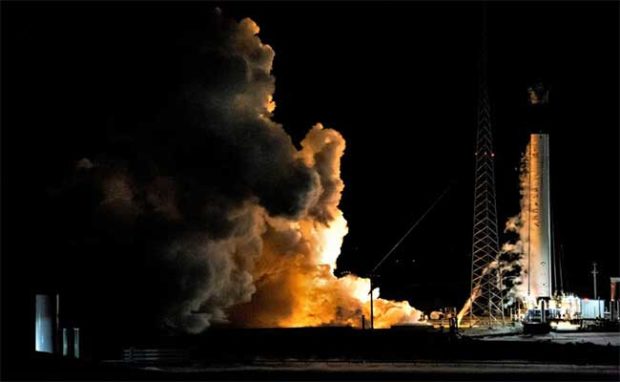SpaceX Successfully Reuses Falcon 9 Rocket for Canadian Satellites
Three satellites for the Canadian Space Agency’s Earth-monitoring Radarsat program were launched into orbit from California on Wednesday aboard a reused SpaceX Falcon 9 rocket. The rocket lifted off from fog-shrouded Vandenberg Air Force Base at 7:17 a.m. and arced over the Pacific west of Los Angeles.
TOUCHDOWN! @SpaceX Falcon 9 1st stage aces rocket landing in thick fog. 2nd stage in orbit w. 3 #RADARSAT satellites for Canada. Triple deployment in just over 40 minutes. SpaceX webcast on hold for a bit. pic.twitter.com/mN8Ll4j8Yi
— Tariq J. Malik (@tariqjmalik) June 12, 2019
The first stage separated a few minutes into flight and headed back to the coastal base, extended its legs and set down on a landing zone.
The first stage previously was used in March for a demonstration flight of SpaceX’s Crew Dragon capsule.
The Radarsat Constellation Mission satellites were deployed a few minutes apart from the upper stage about an hour after liftoff.

Photo: SpaceX
The identical satellites will bounce signals off the Earth’s surface to create images, even during adverse weather conditions.
The images are used for a range of purposes, including tracking of sea ice, vessels, surface winds and oil pollution, as well as disaster management — especially the recurring problem of flooding — and monitoring of agriculture, forestry and land changes.
Related Articles
NASA Sets Sights on Opening the ISS to Tourists Starting in 2020
NASA Captures Unprecedented Images of Supersonic Shockwaves
The spacecraft were designed to operate in the same orbital plane at an altitude of about 373 miles (600 kilometers), separated from each other by about 9,072 miles (14,600 kilometers) while circling the globe in about 96 minutes.
The program’s first orbiter, Radarsat-1, was launched in 1995 and is now inactive. Radarsat-2 was launched in 2007 and is still operational, but the new three-satellite constellation is designed to greatly increase coverage, according to the space agency.
The system targets specific areas for imaging rather than making continuous images.
Primary control of the satellites is from the space agency’s headquarters in Saint-Hubert, Quebec. Each satellite is expected to have a seven-year lifespan.

